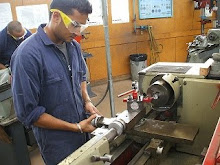Cultural issues
As we discussed in class. New Zealand is a multicultural country with people with different accents. Some accents are very strong and is very difficult to understand. It becomes very difficult to run a buisness if people dont know what you are saying. There should be a good level of english. You should talk clearly and slowly for people to understand you if you have a strong accent. Customers will be more confident and comfortable doing buisness with you when this is achived.
Charge out rates
As we discussed in class, it is very important to know how you are going to charge your customers. Calculation this you should know how you are going to charge them by the hour. Depending on your skill, market value for doing the particular job etc. You should also look at ur overheads and calculate how much income you need to run your business smoothly. Some people have a less hourly rate but charge for longer hours to match their overheads, Customers could also try different places and get quotations get a cheaper place to do their jobs. therefore your charge out rate should be reasonable according to the market value to do the job.Calculate how much money you need to make to cover your expenses. Expenses include materials, wages, advertising and anything else that will take away from your profit base.Look at what your competitors are charging for similar services. You should look into how long they have been in the business and how well they are rated throughout the community.Determine whether or not your charge-out rate will be based on an hour or daily rate.
Warranties and Guaranties
Warranties
In business and legal transactions, a warranty is an assurance by seller to the customer that specific facts or conditions are true or will happen; the customer is permitted to rely on that assurance and seek some type of remedy if it is not true or followed. The seller will have to fix or replace the product if the product is not doing what it was told to do and is covered by the warranty period.
Guaranties
A guarantee is a promise by a person (the guarantor) to settle a debt or fulfil the promise of someone else. The person to whom the promise is made is called the creditor or lender and the person on whose behalf of the promise is made is called the principal debtor or borrower.
Guarantees often state that the obligation of the guarantor is equivalent to the borrower’s obligations. In such a case the lender may call on the guarantor to pay the debt in full without requiring payment from the borrower, without exhausting all of their remedies against the borrower, or without exercising any rights under any securities given by the borrower. In these circumstances when the guarantor repays the guaranteed debt in full, the guarantor may be able to seek reimbursement from the borrower by taking over the lender’s debt and receiving a transfer of any security given to the lender by the borrower. If the borrower is insolvent or the security transferred is inadequate, then the guarantor may be unsuccessful in recovering the debt from the borrower. Because a guarantee exposes a guarantor to potential liability for another person’s debt without any direct benefit, a potential guarantor should carefully consider whether or not to give a guarantee. In practice, the guarantor’s decision to give a guarantee is often determined by factors other than an assessment of the likelihood of the guarantee being called up. For example, a creditor’s loan offer may be conditional
on a guarantee being given.
Quotations
A quote is a written agreement, given to a customer before the required work is done. Once a company has given a customer a written quote; it becomes a legal document, in which the given price for the job is not allowed to change. This includes things like labour, materials and parts..Giving a Quote for something you should always be sure of the cost and hours spent on the job.
Estimates
Estimates should be a general or fair idea of what the cost would be. It is calculated but an estimate for the part price and how long it will take to perform the job. It is just an opinion to the customer on how much the cost would be.
Courtesy Services
Business courtesy plays a very important role in running a business you should be always polite and kind when taking to customers. You should be approachable.The customer should always feel comfortable talking to you. Phones should be answered prepositionally and polity in a good manner. Also the tone of you voice should be controlled when talking to someone. All this contributes to a healthy business.
References
http://www.davidstonelawyer.co.nz/legalbrochures/guarantees.pdf
www.wikipedia.org
http://www.consumer.org.nz/?gclid=CO6dyMjO0KwCFYSFpAodfG6CqQ



































